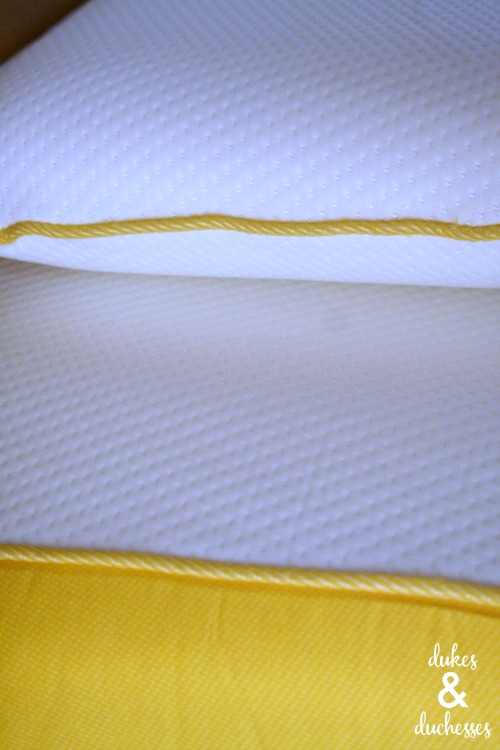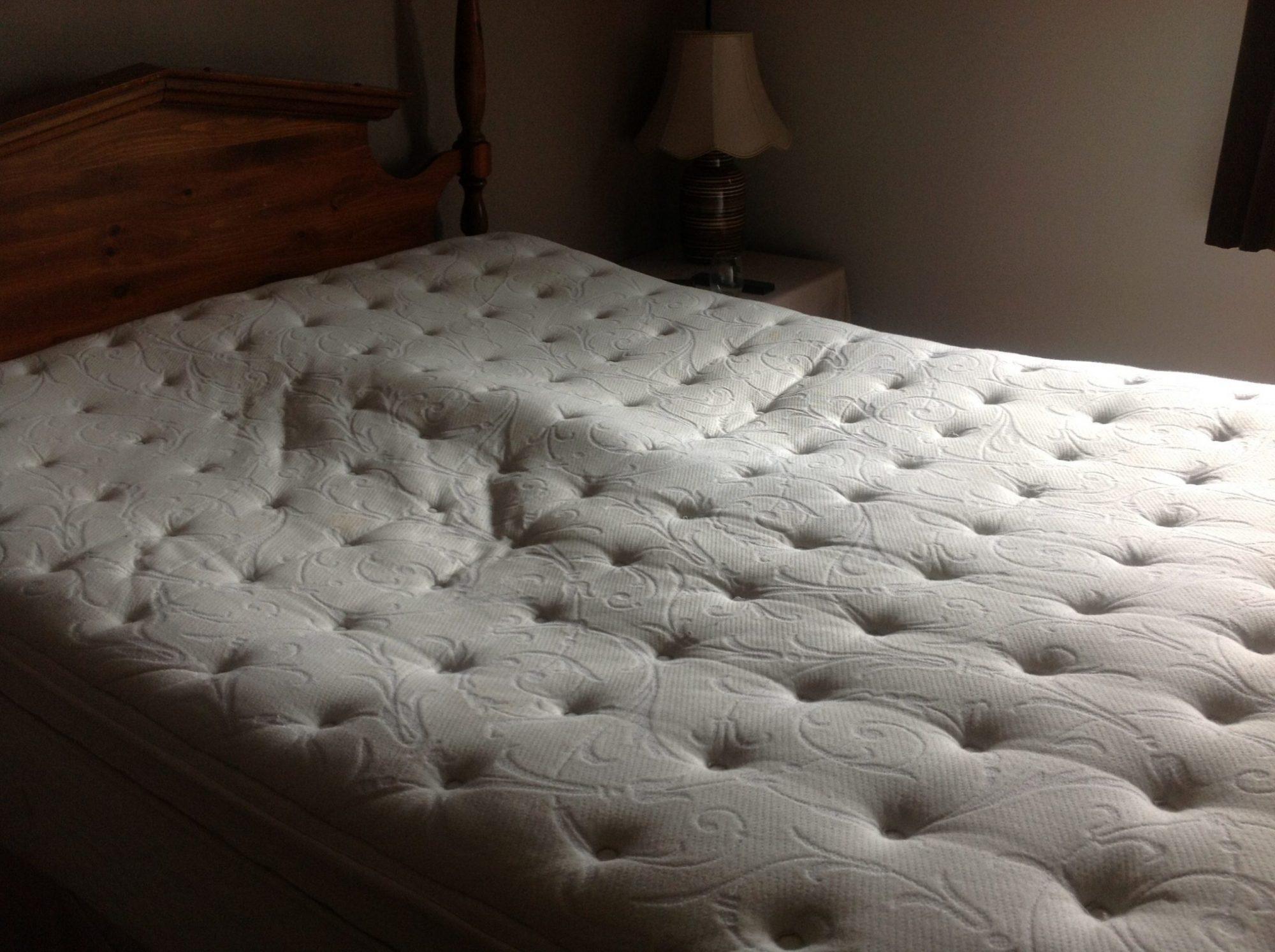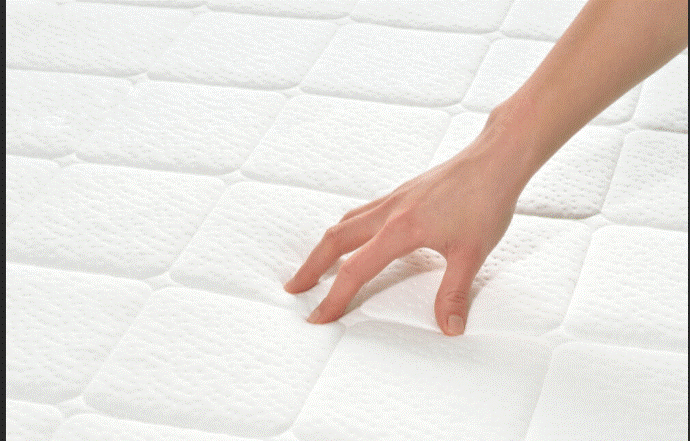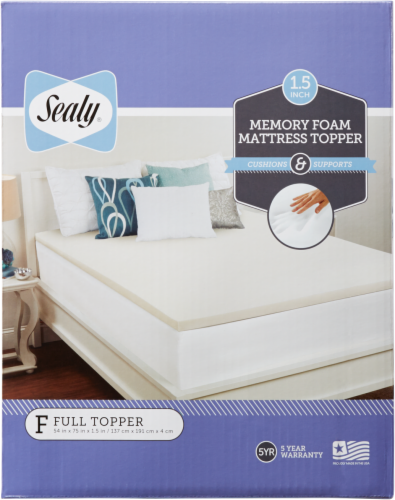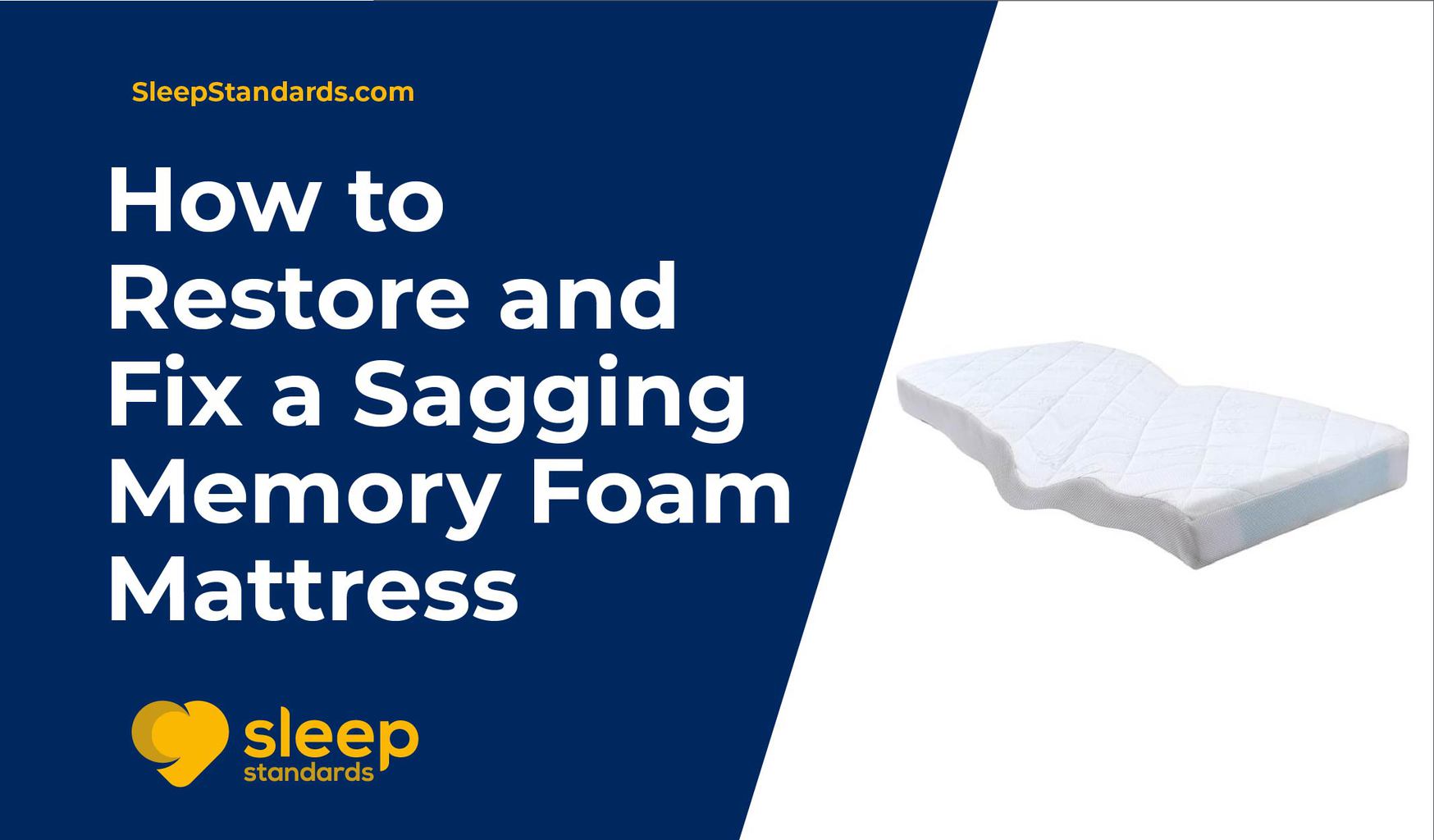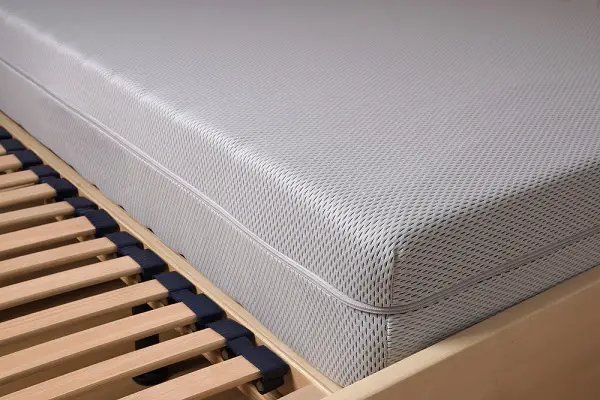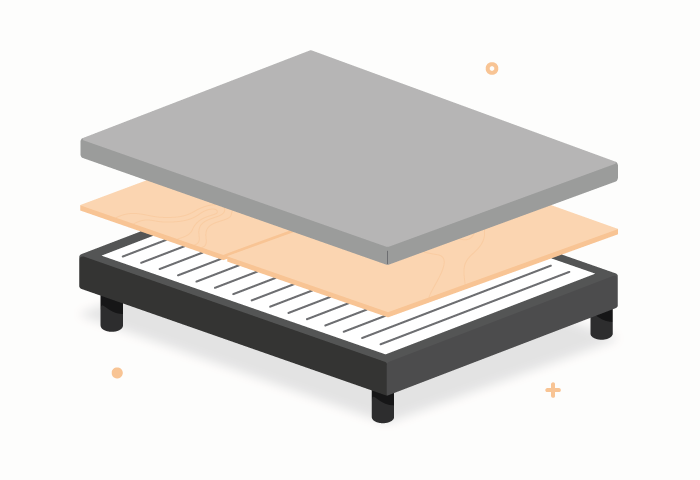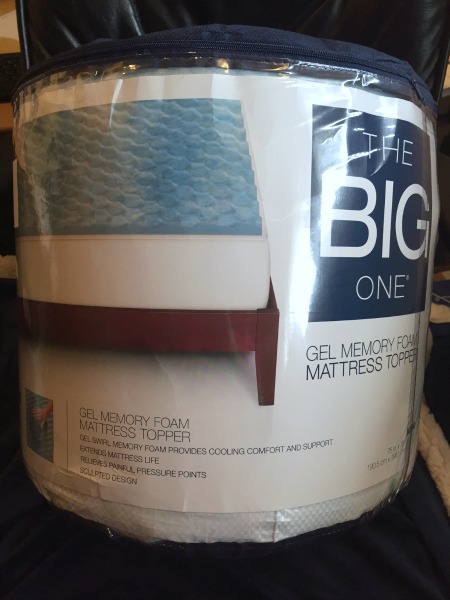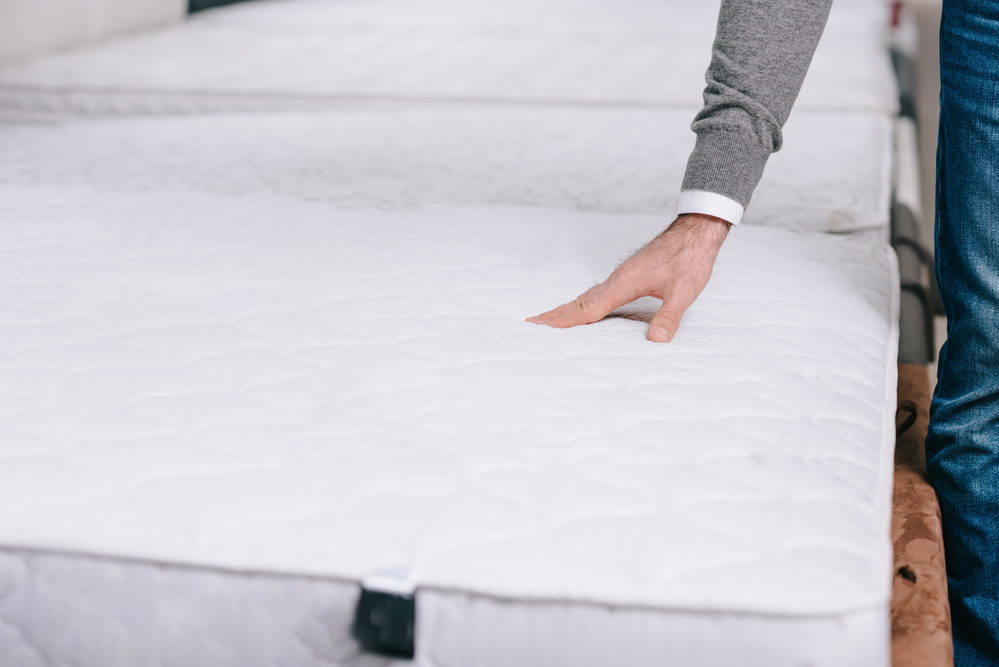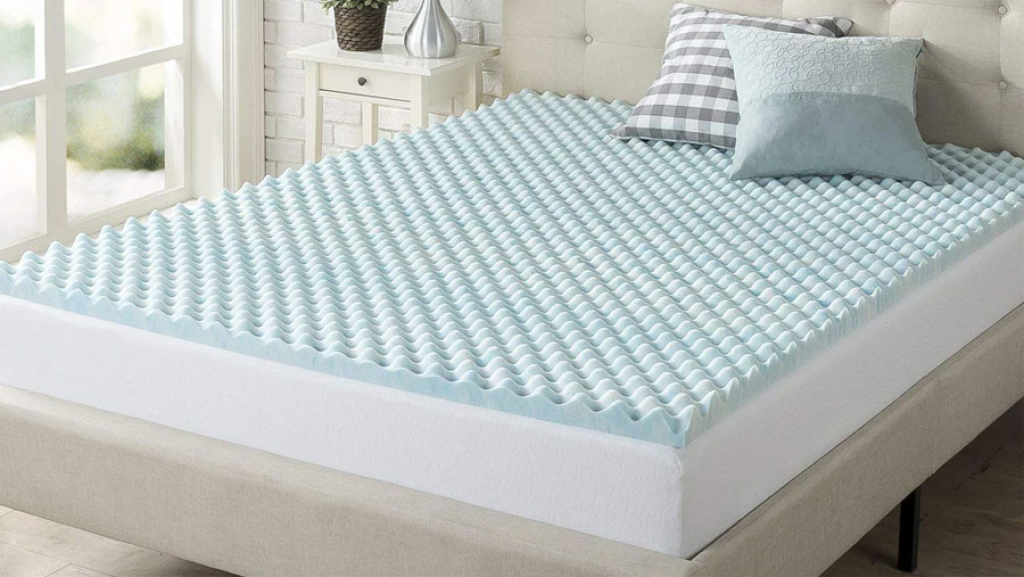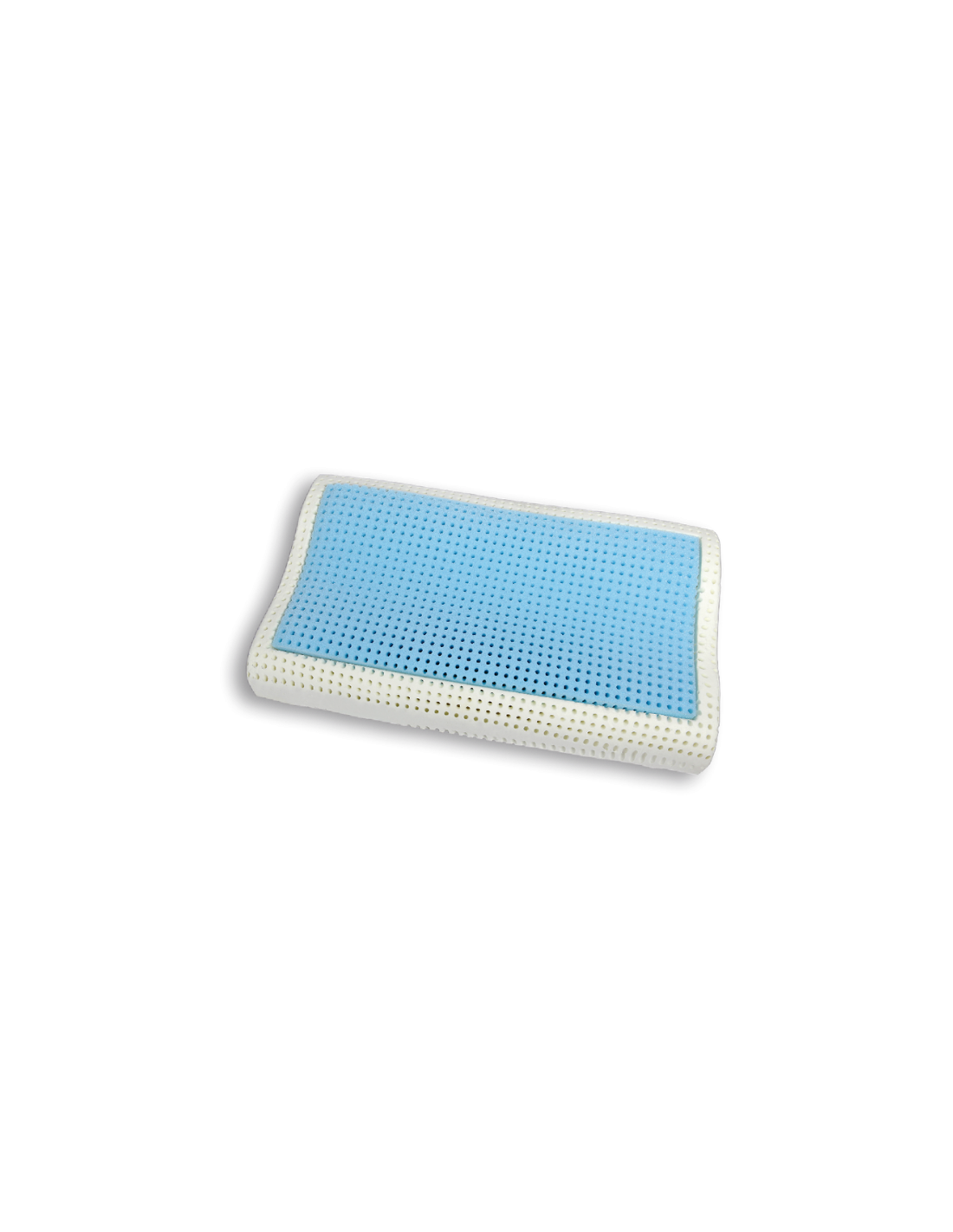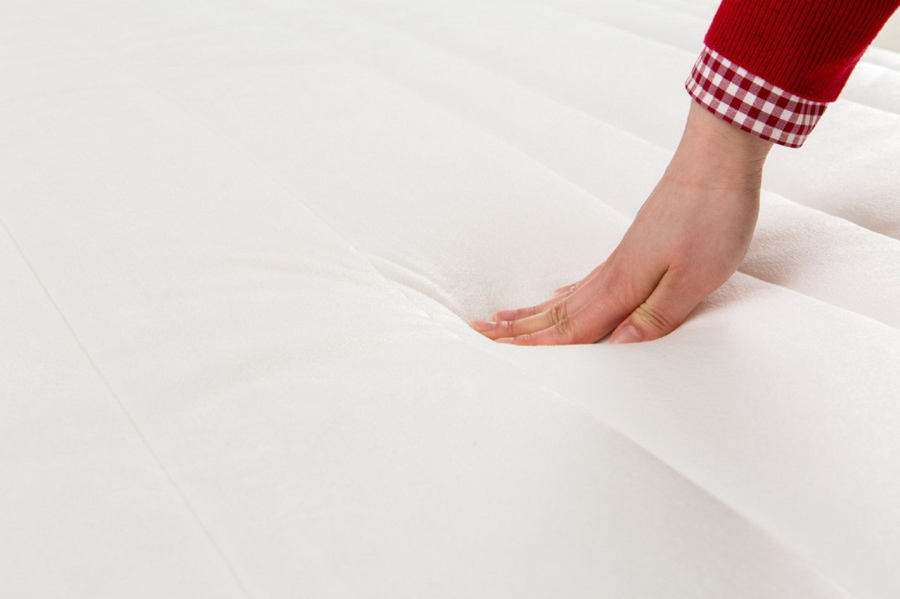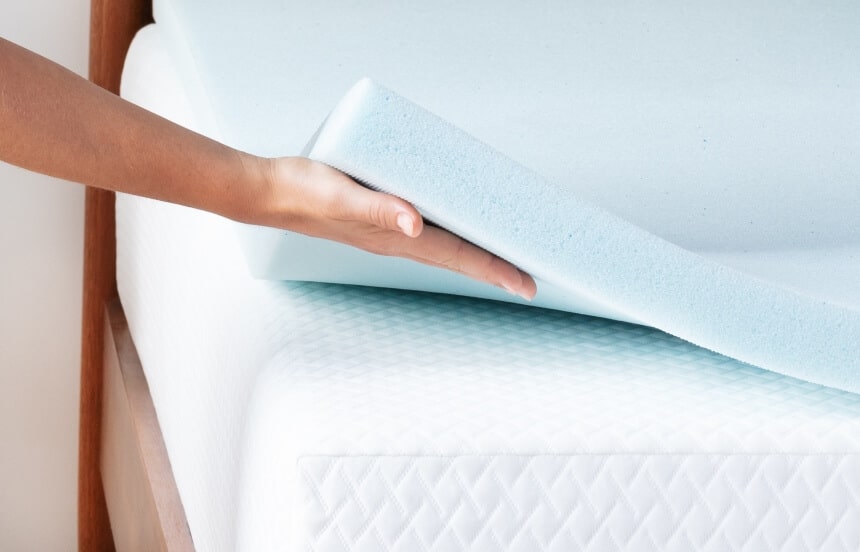Is your memory foam mattress starting to sag and lose its support? Over time, even the highest quality memory foam mattresses can begin to lose their shape and firmness. This can lead to uncomfortable sleep and even back pain. But don't worry, there are ways to fix a sagging memory foam mattress and restore its support and comfort. Follow these simple tips to bring new life to your old mattress. Memory Foam Mattress Repair: How to Fix a Sagging Bed
The first step to fixing a sagging memory foam mattress is to identify the cause of the sag. Memory foam mattresses can sag due to a variety of reasons such as improper support, aging, or weight distribution. Once you have identified the cause, you can start implementing the appropriate solution. How to Fix a Sagging Memory Foam Mattress
Here are five easy tips to fix a sagging memory foam mattress and make it feel like new again: 1. Rotate or flip your mattress - If your mattress has a top and bottom side, try flipping it over or rotating it 180 degrees. This can help redistribute the weight and relieve pressure on specific areas that may be causing the sag. 2. Add extra support - If your mattress is not getting enough support from your bed frame or foundation, consider adding a bunkie board or plywood between the mattress and the frame. This will provide additional support and prevent sagging. 3. Use a mattress topper - A high-quality mattress topper can add extra cushioning and support to your sagging memory foam mattress. Look for a topper made with materials like latex or wool for added durability and comfort. 4. Adjust room temperature - Memory foam mattresses can become softer and more pliable in warmer temperatures. If your room is too warm, try lowering the thermostat or using a cooling mattress pad to keep your mattress firm and supportive. 5. Give it time - If your mattress is relatively new and still under warranty, give it time to fully expand and conform to your body. Memory foam mattresses can take a few weeks to break in and may feel firmer initially. If the sagging persists after a few weeks, contact the manufacturer for a replacement. 5 Tips to Fix a Sagging Memory Foam Mattress
If your memory foam mattress is severely sagging, you may need to take more drastic measures to repair it. Here are a few DIY solutions for fixing a sagging memory foam mattress: 1. Use a mattress repair kit - There are special repair kits available that can help fill in any indents or sagging areas on your memory foam mattress. These kits often contain a liquid that hardens and helps restore the shape and support of your mattress. 2. Add more foam - For minor sagging, you can try adding more memory foam to the affected areas. Cut a piece of memory foam to fit the indented area and place it on top of the mattress before covering it with a mattress protector or fitted sheet. 3. Use a steam cleaner - If your mattress is sagging due to body oils and sweat, a steam cleaner can help remove these residues and restore the foam's elasticity. Make sure to use a gentle steam setting and avoid getting the mattress too wet. How to Repair a Sagging Memory Foam Mattress
If you're not interested in DIY solutions, there are some easy ways to fix a sagging memory foam mattress that don't require any special tools or materials. Here are a few options: 1. Invest in a new foundation - Memory foam mattresses need proper support to maintain their shape and prevent sagging. If your current foundation is not providing enough support, consider investing in a new one specifically designed for memory foam mattresses. 2. Replace the memory foam layer - If your mattress is older and the memory foam layer is worn out, you may need to replace it. Look for a high-density memory foam topper or layer to provide the necessary support and prevent sagging. 3. Contact the manufacturer - If your memory foam mattress is still under warranty and the sagging is not due to improper use or care, contact the manufacturer for a replacement or repair. Most reputable companies offer a warranty of at least 10 years, so take advantage of it. Easy Ways to Fix a Sagging Memory Foam Mattress
If you're feeling handy, there are a few DIY solutions you can try to fix a sagging memory foam mattress. These methods can help restore the support and comfort of your mattress without breaking the bank. 1. Use a tennis ball - Place a few tennis balls in a sock and tie the end. Place the sock on the sagging area of your mattress and leave it overnight. The pressure from the tennis balls can help fluff up the memory foam and restore its shape. 2. Fill with cotton - Cut open a pillow or cushion and use the cotton filling to stuff the sagging area of your mattress. This can help fill in the gaps and provide added support. 3. Vacuum - Use a vacuum with a hose attachment to suck out any air trapped in the sagging area of your mattress. This can help fluff up the foam and restore its shape. DIY Solutions for a Sagging Memory Foam Mattress
If your memory foam mattress topper is sagging, there are a few easy solutions you can try to fix it. Here are some quick fixes for a sagging memory foam mattress topper: 1. Use a mattress cover - A mattress cover or protector can help keep your memory foam topper in place and prevent sagging. Look for a cover with a non-slip bottom to ensure it stays in place. 2. Flip or rotate it - If your topper has a top and bottom side, try flipping it over or rotating it 180 degrees. This can help redistribute the weight and prevent sagging. 3. Add more support - Place a piece of plywood or cardboard between the topper and your mattress to provide extra support and prevent sagging. How to Fix a Sagging Memory Foam Mattress Topper
Knowing the common causes of a sagging memory foam mattress can help you prevent and fix the issue before it becomes too severe. Here are some common causes and solutions for a sagging memory foam mattress: 1. Improper support - Memory foam mattresses need proper support to maintain their shape and prevent sagging. Make sure your bed frame or foundation is suitable for a memory foam mattress and provides adequate support. 2. Age - Like any other mattress, memory foam mattresses will eventually wear out over time. If your mattress is older and has been used for many years, it may be time to replace it. 3. Weight distribution - If you or your partner are significantly heavier than the other, this can cause uneven weight distribution and lead to sagging. Consider using a mattress with individually wrapped coils to prevent this issue. Common Causes and Solutions for a Sagging Memory Foam Mattress
Prevention is key when it comes to maintaining the shape and support of your memory foam mattress. Here are some tips to prevent and fix a sagging memory foam mattress: 1. Use a mattress protector - Investing in a high-quality mattress protector can help prevent spills and stains that can damage your mattress and lead to sagging. 2. Rotate or flip your mattress regularly - If your mattress has a top and bottom side, try flipping it over or rotating it every few months. This can help redistribute the weight and prevent sagging. 3. Avoid jumping on the bed - While it may be tempting, avoid jumping on your memory foam mattress as it can cause damage and lead to sagging. How to Prevent and Fix a Sagging Memory Foam Mattress
If all else fails, there are professional options available for fixing a sagging memory foam mattress. Here are a few options to consider: 1. Contact the manufacturer - If your mattress is still under warranty, contact the manufacturer for a replacement or repair. Most reputable companies offer a warranty of at least 10 years for sagging issues. 2. Hire a professional - There are companies that specialize in repairing and restoring sagging memory foam mattresses. They use specialized techniques and materials to restore the shape and support of your mattress. Professional Options for Fixing a Sagging Memory Foam Mattress
Can You Fix Your Sagging Memory Foam Mattress?
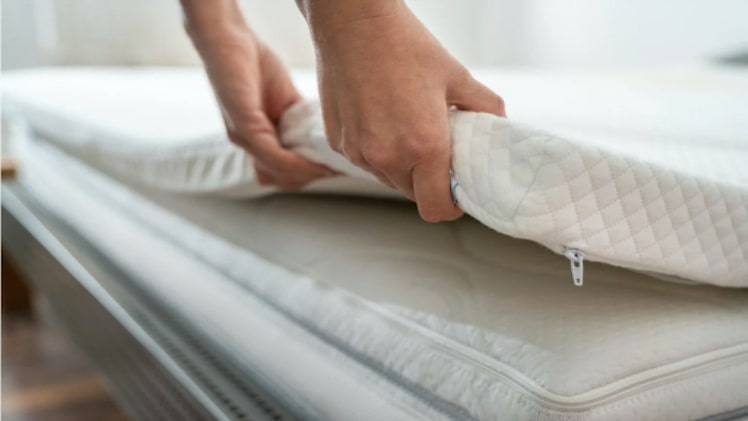
The Problem with Sagging Memory Foam Mattresses
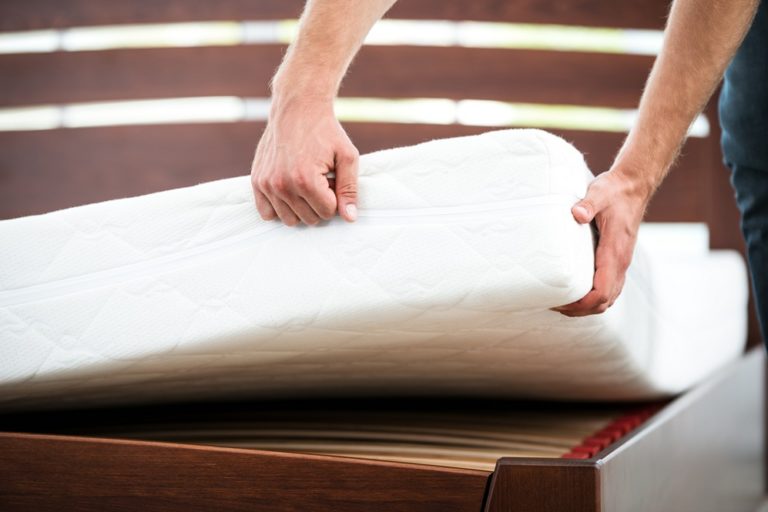 If you have a memory foam mattress, you know that it can provide unparalleled comfort and support for a good night's sleep. However, over time, you may start to notice that your once firm and supportive mattress is starting to sag in the middle. This can be frustrating and uncomfortable, and may even disrupt your sleep. But fear not, because there are ways to fix a sagging memory foam mattress.
If you have a memory foam mattress, you know that it can provide unparalleled comfort and support for a good night's sleep. However, over time, you may start to notice that your once firm and supportive mattress is starting to sag in the middle. This can be frustrating and uncomfortable, and may even disrupt your sleep. But fear not, because there are ways to fix a sagging memory foam mattress.
Why Do Memory Foam Mattresses Sag?
 Before we dive into solutions, it's important to understand why memory foam mattresses sag in the first place. The main culprit is the material itself. Memory foam is made of polyurethane foam which, over time, can compress and break down under the weight and pressure of our bodies. This can lead to sagging and loss of support, especially in the most used areas of the mattress.
Before we dive into solutions, it's important to understand why memory foam mattresses sag in the first place. The main culprit is the material itself. Memory foam is made of polyurethane foam which, over time, can compress and break down under the weight and pressure of our bodies. This can lead to sagging and loss of support, especially in the most used areas of the mattress.
Solution 1: Rotate and Flip
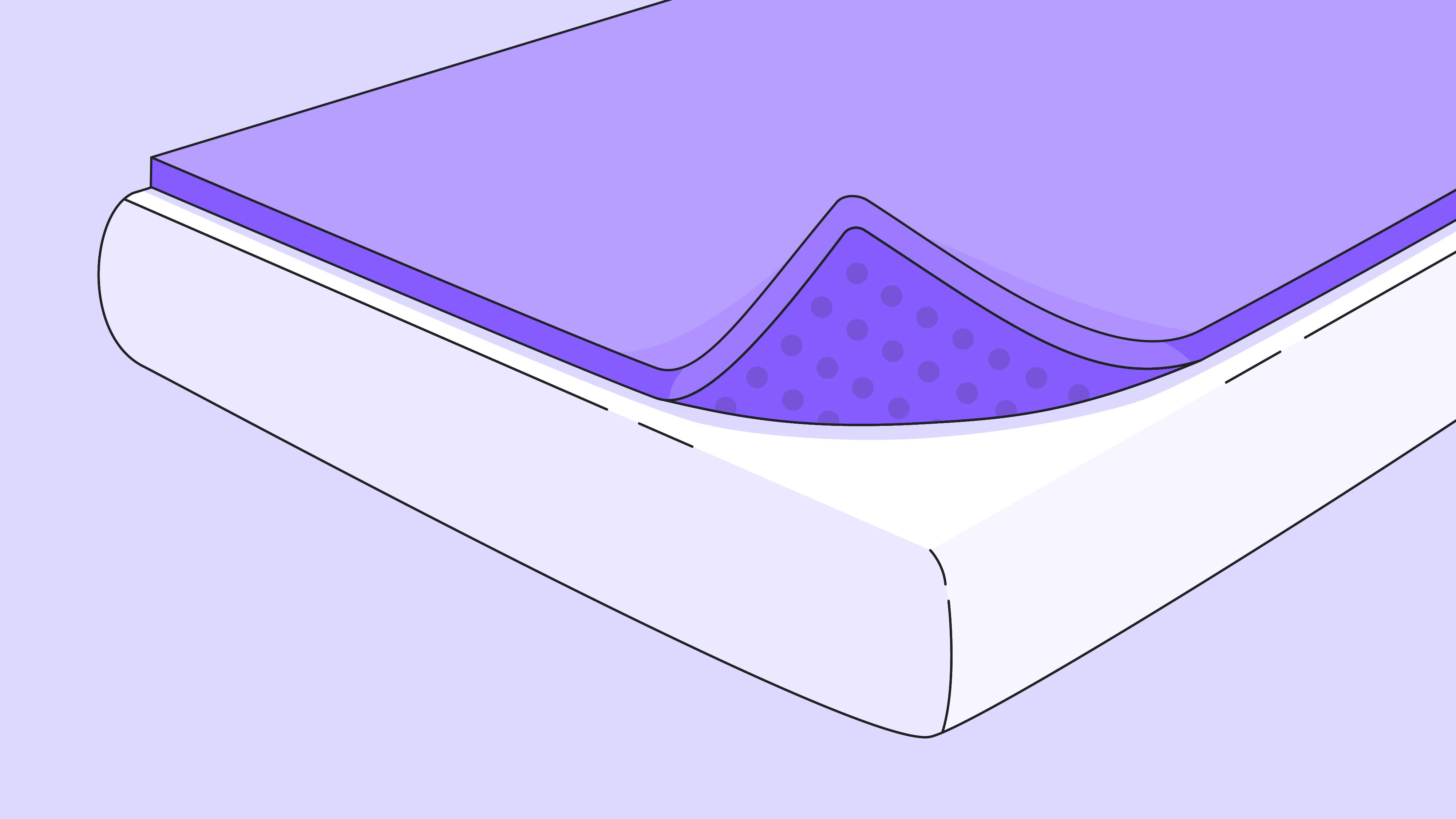 One of the simplest ways to fix a sagging memory foam mattress is to rotate and flip it regularly. This helps to distribute the weight evenly and prevent excessive wear on one side of the mattress. Most memory foam mattresses can be rotated and flipped, but be sure to check with the manufacturer's instructions first.
One of the simplest ways to fix a sagging memory foam mattress is to rotate and flip it regularly. This helps to distribute the weight evenly and prevent excessive wear on one side of the mattress. Most memory foam mattresses can be rotated and flipped, but be sure to check with the manufacturer's instructions first.
Solution 2: Add a Mattress Topper
 Another solution is to add a mattress topper to your sagging memory foam mattress. A mattress topper is essentially an extra layer of padding that can help provide additional support and cushioning. Look for a memory foam or latex topper, as these materials can contour to your body and provide extra comfort.
Another solution is to add a mattress topper to your sagging memory foam mattress. A mattress topper is essentially an extra layer of padding that can help provide additional support and cushioning. Look for a memory foam or latex topper, as these materials can contour to your body and provide extra comfort.
Solution 3: Use a Supportive Base
 Sometimes, the problem may not be with the memory foam itself, but with the base it sits on. Make sure your mattress is placed on a supportive, flat surface. If you have a slatted bed frame, ensure the slats are no more than 3 inches apart. If your bed frame doesn't provide enough support, consider investing in a platform bed or a sturdy foundation specifically designed for memory foam mattresses.
Sometimes, the problem may not be with the memory foam itself, but with the base it sits on. Make sure your mattress is placed on a supportive, flat surface. If you have a slatted bed frame, ensure the slats are no more than 3 inches apart. If your bed frame doesn't provide enough support, consider investing in a platform bed or a sturdy foundation specifically designed for memory foam mattresses.
Solution 4: Replace the Foam
 If your memory foam mattress is beyond repair, you may need to replace the foam itself. This can be a more expensive solution, but it can also provide long-lasting results. Look for high-density memory foam, which is more durable and less likely to sag over time.
If your memory foam mattress is beyond repair, you may need to replace the foam itself. This can be a more expensive solution, but it can also provide long-lasting results. Look for high-density memory foam, which is more durable and less likely to sag over time.
Conclusion
 A sagging memory foam mattress doesn't necessarily mean you need to replace the entire mattress. By rotating and flipping, using a mattress topper, ensuring a supportive base, or replacing the foam, you can extend the life of your mattress and enjoy a comfortable and restful sleep. Remember to regularly check for signs of sagging and address them promptly to maintain the comfort and support of your memory foam mattress.
A sagging memory foam mattress doesn't necessarily mean you need to replace the entire mattress. By rotating and flipping, using a mattress topper, ensuring a supportive base, or replacing the foam, you can extend the life of your mattress and enjoy a comfortable and restful sleep. Remember to regularly check for signs of sagging and address them promptly to maintain the comfort and support of your memory foam mattress.

